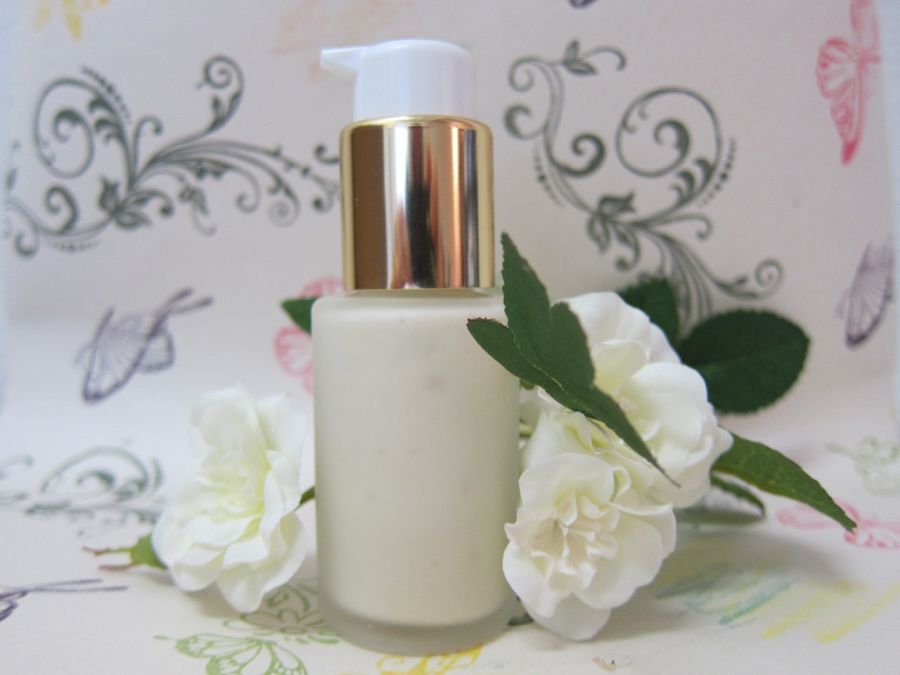You don’t want your moisturizer to contain drying and sensitizing alcohols, but you might feel that you’re being lied to when you pick up a bottle that says “alcohol-free,” yet lists cetearyl alcohol as an ingredient. Product labels can be baffling, so here’s the truth about cetearyl alcohol and its use in moisturizers.
What is Cetearyl Alcohol?
Cetearyl alcohol is a white, waxy substance naturally derived from plants, but can also be synthesized in a lab. It’s made from cetyl alcohol and stearyl alcohol, which are both fatty alcohols. Cetyl alcohol is derived from palm oil, and stearyl alcohol is from stearic acid. Cetearyl alcohol’s molecular formula is C34H72O2. It is insoluble in water and soluble in alcohol and oils.
This substance is used in personal care products, mainly creams, skin lotions, and hair products. It appears on the ingredient list as cetearyl alcohol, but it can also be mentioned as other names, such as:
- Cetyl/stearyl alcohol
- Cetostearyl alcohol
- Alcohols, C1618
- (C16-C18) alkyl alcohol
- C16-18 alcohols
- 1-octadecanol, mixed with 1-hexadecanol
How Does Cetearyl Alcohol Differ with Other Alcohols?
The last ingredient you want in a moisturizer is alcohol. But although cetearyl alcohol is alcohol by definition, it’s not the same as the traditional alcohols like ethanol or rubbing alcohol that is known for drying and sensitizing the skin.
Alcohol simply refers to chemicals that have an –OH group in it, or in other words, when you have oxygen and hydrogen attached together, that makes anything alcohol. In cetearyl alcohol, the alcohol chemical structure is attached to a long chain of fats, balancing it out. This is the reason why it’s less harsh on the skin and allows it to become an emollient.
Purpose of Cetearyl Alcohol
Cetearyl alcohol has many functions in skincare and cosmetic products. It acts as an emulsifier and stabilizer to prevent creams from separating into liquid and oil. It also makes a product thicker or increase its ability to foam.
Cetearyl alcohol is not an ingredient used for its actual effects for the skin, but for improving the composition and function of a moisturizer or any personal care product. These are the things cetearyl alcohol can do:
- It prevents the separation of creams and lotions. Cetearyl alcohol stabilizes the product as an emulsifier so that when you apply the product on your skin, it applies evenly and won’t separate.
- It thickens formula. Cetearyl alcohol is usually used as a thickening agent to enhance the texture and feel of the product.
- It helps the product spread evenly. Since it keeps the product from separating, it may help with the application of a product to get overall effectiveness. Cetearyl alcohol allows even a combination of the ingredients to be present in every drop of the moisturizer.
- It softens the skin. Cetearyl alcohol has fatty components and is derived from oils, which gives it an emollient property that can smoothen and soften skin.
Is it Safe to Use in Moisturizers?
Not every alcohol is going to irritate your skin, make it itchy, or cause flaking or peeling. The chemical makeup of cetearyl alcohol makes it different from the skin-drying types of alcohol. It has fatty alcohols that trap water and give a soothing feel to the skin. It forms an oily layer on the top of the skin, keeping the moisture inside.
Fatty alcohols, including cetearyl alcohol, are deemed safe for use in cosmetic products by the Cosmetic Ingredient Review (CIR) Expert Panel. In clinical studies, cetearyl alcohol was found to be non-mutagenic, non-sensitizing, and non-toxic.
The FDA lists cetearyl acid as a safe and permitted additive. They even allow cosmetic products labeled as “alcohol-free” to contain cetearyl alcohol and other fatty alcohols.
EWG rated cetearyl alcohol as a 1 on a scale of 1 to 10, with 10 being the highest risk to health.
Studies have found that there’s only a small risk of an allergic reaction to cetearyl alcohol. A 2007 study confirmed five cases of an allergic reaction to cetearyl alcohol, but the reactions to other chemicals also occurred in these cases. The cases also belong to people with allergic contact dermatitis. A 1996 study involving 140 people with suspected cosmetic contact dermatitis has shown that another fatty alcohol, oleyl alcohol, caused contact dermatitis to 23 percent of people studied.
The bottom line is, cetearyl alcohol is generally safe. If you have sensitive skin, allergies, or contact dermatitis, it’s ideal for performing a patch test first with any product containing the ingredient before using it all the way.

